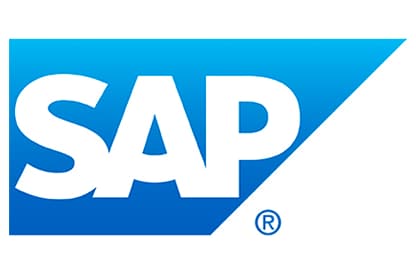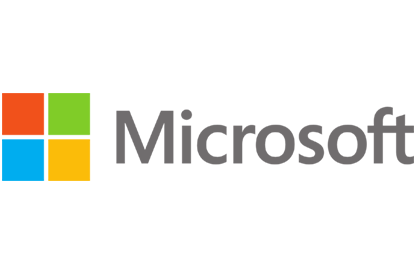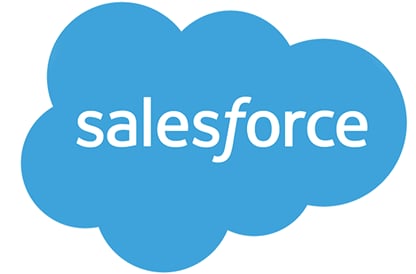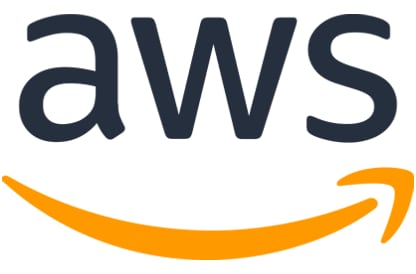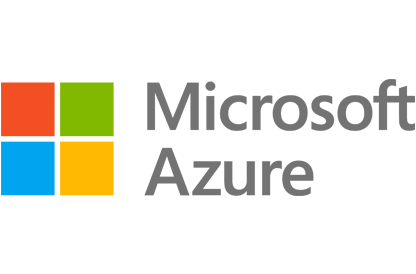What is DevSecOps?

Overview

Explore how DevSecOps seamlessly weaves security into every stage of development—enabling faster, safer, and more reliable software delivery
DevSecOps shifts security testing earlier in the and development cycle, making vulnerabilities easier and cheaper to mitigate and fix
In DevSecOps, security isn’t an afterthought—it’s built in from day one. The right tools, like security-enabled IDEs, weave protection into every step. And with automated security gates, you can stay secure and keep your DevOps pipeline running at full speed. Use behavioral analytics to monitor source code and detect suspicious or malicious activity early. Platform engineering can provide a secure and cohesive experience for developers while minimizing the number of tools used in your software development lifecycle (SDLC) environment and streamlining workflows.
DevSecOps
DevOps vs. DevSecOps
DevOps streamlines collaboration between development and operations to speed up software delivery. DevSecOps builds on that foundation by embedding security practices directly into the development lifecycle—starting from planning through to deployment. Instead of treating security as a final step, DevSecOps ensures vulnerabilities are identified and addressed early, reducing risk, cost, and delays while maintaining the pace of innovation.
While DevOps can mean different things to different people or organizations, it involves both cultural and technical changes, with security being an implied requirement for success. DevOps vs. DevSecOps, then, is not a matter of opposition but evolution—DevSecOps extends the DevOps mindset by making security an integrated and essential part of the process.
What are the benefits of DevSecOps?
Developers don’t always code with security in mind. With a DevSecOps mentality, developers are enabled with enhanced automation throughout the software and application delivery pipeline to eliminate coding mistakes and ultimately reduce breaches. Also, insider risks have been increasing due to either unintentional (e.g. social engineering) or intentional attacks. With behavioral analytics, organizations can detect and address such threats with greater effectiveness and efficiency.
Teams that implement DevSecOps tools and processes to integrate security into their DevOps framework will be able to release secure software faster. Developers can test code for security and detect security flaws as code is written, elevating their awareness and preventing malicious or vulnerable code from reaching production environments. Automated scans can be initiated as part of code check-ins, builds, releases, or other components of the CI/CD pipeline. By integrating with tools developers are already using, dev teams can more easily improve the security aspect of web application development.
What are key components of DevSecOps?
DevSecOps approaches may include these important components:
Application/API inventory
- Automate the discovery, profiling, and continuous monitoring of the code across the portfolio. This may include production code in data centers, virtual environments, private clouds, public clouds, containers, serverless, and more. Use a combination of automated discovery and self-inventory tools. Discovery tools help you identify what applications and APIs you have. Self-reporting tools enable your applications to inventory themselves and report their metadata to a central database.
Custom code security
- Continuously monitor software for vulnerabilities throughout development, testing, and operations. Deliver code frequently so vulnerabilities can be identified quickly with each code update.
- Static Application Security Testing (SAST) scans the application source files, accurately identifies the root cause, and helps remediate the underlying security flaws.
- Dynamic Application Security Testing (DAST) simulates controlled attacks on a running web application or service to identify exploitable vulnerabilities in a running environment.
- Interactive Application Security Testing (IAST) provides a deep scan by instrumenting the application using agents and sensors to continuously analyze the application, its infrastructure, dependencies, dataflow, as well as all the code.
Open source security
- Open source software (OSS) oftentimes includes security vulnerabilities, so a complete security approach includes a solution that tracks OSS libraries, and reports vulnerabilities and license violations.
- Software Composition Analysis (SCA) automates the visibility into open source software (OSS) for the purpose of risk management, security, and license compliance.
Runtime prevention
- Protect applications in production – new vulnerabilities may be discovered, or legacy applications may not be in development.
- Managing security logs can inform you about what types of attack vectors and systems are being targeted. Threat intelligence informs threat modeling and security architecture processes.
Compliance monitoring
- Enable audit readiness and a constant state of compliance for GDPR, CCPA, PCI, etc.
Cultural factors
- Identify security champions, establish security training for developers, etc.
Insider threat mitigation
- Protect source code and sensitive data by continuously monitoring insider activities to uncover malicious behaviors before damage is done.
AI cybersecurity
- Automate cybersecurity with AI to detect threats early and accelerate innovation. Make smarter decisions with AI-powered insights.
IT operations and DevSecOps integration
The integration of IT Operations into the DevSecOps framework represents a significant evolution in software development and deployment practices. This synergy between development, security, and operations teams is crucial for ensuring a seamless, secure, and efficient software development lifecycle. By incorporating IT Operations into the DevSecOps model, organizations can achieve greater agility, enhanced security, and improved overall performance throughout the entire software lifecycle.
The impact of IT Operations on DevSecOps is multifaceted and touches upon several key areas of the development and deployment process:
1. Deploy: Automated infrastructure delivery
In the realm of deployment, IT Operations plays a pivotal role in automating the delivery of infrastructure necessary to deploy applications. This automation is not just about speed; it's about ensuring that every deployment adheres strictly to company policies and best practices. By automating infrastructure delivery, organizations can achieve consistent and repeatable deployment processes, significantly reducing the risk of human error while simultaneously enhancing security.
This automated approach to deployment brings several benefits. First, it dramatically reduces the time-to-market for new applications and updates, allowing businesses to respond more quickly to market demands and customer needs. Second, it ensures that every deployment, regardless of scale or complexity, adheres to organizational standards and compliance requirements. This consistency is crucial in maintaining a secure and compliant IT environment, especially in industries with strict regulatory oversight.
Moreover, automated infrastructure delivery enables teams to implement infrastructure-as-code practices, where infrastructure configurations are version-controlled, tested, and deployed using the same rigorous processes applied to application code. This approach not only improves reliability but also enhances collaboration between development and operations teams, a key tenet of the DevSecOps philosophy.
2. Operate: Automated maintenance and patching
The 'Operate' phase of IT Operations within DevSecOps focuses on maintaining infrastructure through automated patching and updates. This aspect is critical in today's rapidly evolving threat landscape, where new vulnerabilities are discovered regularly, and the window for exploitation is increasingly narrow.
Automated maintenance and patching processes ensure that systems are updated promptly, addressing both security vulnerabilities and performance issues proactively. This automation is essential for several reasons. First, it significantly reduces the time between the discovery of a vulnerability and its remediation, minimizing the exposure window. Second, it ensures consistency across the entire infrastructure, eliminating the risks associated with partial or inconsistent updates.
Furthermore, automated operations reduce the need for manual intervention, which not only saves time but also minimizes the risk of human error – a common source of security breaches and system instabilities. By automating routine maintenance tasks, IT teams can focus on more strategic initiatives, driving innovation and improving overall system architecture.
This approach to operations also supports the principle of continuous improvement in DevSecOps. With automated systems constantly monitoring and updating the infrastructure, teams can maintain a state of ongoing optimization, ensuring that systems are not just secure, but also performing at their best.
3. Monitor: Production observability
Effective monitoring and observability of applications in production environments are crucial components of a successful DevSecOps strategy. This phase goes beyond simple uptime monitoring; it involves comprehensive insights into application performance, user experience, and potential security issues in real-time.
Implementing robust monitoring and observability practices enables organizations to maintain high levels of reliability and uptime. By continuously collecting and analyzing data from production environments, teams can detect and address issues before they impact users. This proactive approach to problem-solving is essential in maintaining user satisfaction and preventing minor issues from escalating into major incidents.
Moreover, infrastructure observability provides invaluable data for continuous improvement. By analyzing patterns in application performance, user behavior, and system interactions, teams can identify opportunities for optimization and enhancement. This data-driven approach to development ensures that future iterations of the application are not just feature-rich, but also more stable, secure, and performant.
Advanced network monitoring tools can also play a crucial role in security. By implementing anomaly detection and behavior analysis, organizations can quickly identify potential security threats or unusual activities that might indicate a breach attempt. This integration of security monitoring into the overall observability strategy exemplifies the holistic approach of DevSecOps, providing integrated production observability with pre-production testing.
4. Plan: Continuous feedback loop
The planning phase in IT Operations closes the DevSecOps loop by providing critical feedback into the development process. This feedback mechanism is essential for driving continuous improvement and ensuring that development efforts are aligned with operational realities and business objectives.
By analyzing data gathered from production environments, IT Operations can drive enhancement requests based on real-world performance data. This ensures that development priorities are set based on actual user needs and system performance, rather than assumptions or outdated requirements.
The concept of error budgeting is another crucial aspect of this planning phase. By setting acceptable thresholds for errors and performance issues, teams can balance the need for rapid innovation with the requirement for system stability. This approach allows organizations to make informed decisions about when to push for new features and when to focus on system reliability and performance improvements.
Performance improvement initiatives are also driven by this continuous feedback loop. By identifying bottlenecks, inefficiencies, or areas of high resource utilization in production, IT Operations can provide developers with concrete targets for optimization. This data-driven approach to performance tuning ensures that efforts are focused where they will have the most significant impact with real-world production feedback.
Furthermore, the planning phase allows for the alignment of development priorities with operational realities. By providing insights into the challenges and constraints of running applications in production, IT Operations helps ensure that new features and updates are designed with operability and maintainability in mind from the outset.
Making DevSecOps work for you
Step 1: Build security into software requirements
Step 2: Test early, often and fast
Step 3: Leverage integrations to make application security a natural part of the lifecycle
Step 4: Automate security as part of the development and testing processes
Step 5: Monitor and protect during and after release
Integrated DevSecOps platform
OpenText’s DevOps platform delivers end-to-end DevSecOps capabilities. A DevSecOps platform provides a unified, flexible way to integrate security into your DevOps pipeline so you can release high quality software at the speed of business. This cloud-based platform works with your development tools to improve production efficiency, maximize quality delivery, ensure security, and align business goals with development resources.
- OpenText™ Core Software Delivery Platform seamlessly integrates security into every stage, boosting collaboration and supercharging efficiency.
- Harness AI to transform data into actionable insights, propelling smarter decision-making.
- Predict and prepare for security risks by identifying vulnerabilities early.
- Streamline security processes to innovate faster and proactively tackle threats.
- Liberate developers from manual security checks, empowering them to focus on breakthrough innovations.
- Manage threats and boost your threat response capabilities with real-time security insights from OpenText™ Core Application Security (Fortify).
- Integrate security into your CI/CD pipeline and leverage AI for an optimized workflow.
- Go to market faster with secure, compliant software that syncs perfectly with your goals, fueling innovation and efficiency with OpenText™ Core Software Delivery Platform + OpenText Core Application Security (Fortify).
Secure your DevOps
- Holistic, inclusive, and extensible application security platform to orchestrate and guide your AppSec journey.
- Embed security into application development and deployment with OpenText Core Software Delivery Platform and OpenText Core Application Security (Fortify).
- DevSecOps with OpenText Core Application Security (Fortify) enables enhanced testing automation throughout the CI/CD pipeline to find coding mistakes.
- Automated static code analysis helps developers eliminate vulnerabilities and build secure software with Static Code Analyzer.
- WebInspect dynamic application security testing analyzes applications in their running state and simulates attacks against an application to find vulnerabilities.
- Take full control of your open source security compliance and community health with OpenText™ Core Software Composition Analysis.
- Gain clarity across your enterprise by aggregating, analyzing, and reporting assessment results into a single pane of glass—regardless of origin—with Fortify Insight.
Industry-leading DevSecOps tools
DevSecOps tools integrate security into the DevOps pipeline, enabling continuous monitoring and automated security measures throughout development. OpenText has
- Holistic, inclusive, and extensible application security platform to orchestrate and guide your AppSec journey with the Fortify Platform. (OpenText Core Software Delivery Platform + OpenText™ Core Application Security)
- Application Security as a service with OpenText™.
- The success of a product is best measured by customers. Gartner Peer Insights, G2s, Core Application Security (Fortify) customer success stories.
- Proven leader in the Gartner Magic Quadrant for Application Security Testing.
- Identified Leader in IDC
OpenText™ Core Behavioral Signals
It uniquely addresses backend visibility problems by applying behavioral analytics to the application logs of IP repositories such as Source Code Management (SCM) and pinpoints high-risk activities so they can stop bad behavior before a breach.
IT Operations Cloud solutions
OpenText offers a comprehensive suite of IT Operations solutions that seamlessly integrate with the DevSecOps framework, enabling organizations to fully realize the benefits of this integrated approach:
In the deployment phase, ITOM automates infrastructure provisioning and application deployment, ensuring consistency and compliance across various environments. This automation not only speeds up the deployment process but also significantly reduces the risk of configuration errors and security misconfigurations.
For ongoing operations, ITOM provides advanced IT automation capabilities for patch management and configuration management. These features are crucial for maintaining a secure and optimized IT environment, automatically addressing vulnerabilities and performance issues as they arise. The solution's ability to manage both on-premises and cloud environments makes it particularly valuable for organizations with hybrid infrastructures.
ITOM's monitoring and observability tools offer comprehensive insights into application and infrastructure performance. By providing real-time visibility into system health, performance metrics, and potential issues, ITOM enables proactive issue resolution and helps maintain high levels of service reliability.
Perhaps most importantly, ITOM delivers actionable insights and analytics that drive continuous improvement. By analyzing trends, identifying patterns, and forecasting potential issues, ITOM provides IT teams with the information they need to make data-driven decisions and strategically plan for future enhancements and optimizations.
FAQs

What is “Shift Left” security, and why is it important?
"Shift Left" security means integrating security early in the software development lifecycle (SDLC) rather than addressing vulnerabilities later. By embedding security into code, CI/CD pipelines, and infrastructure as code (IaC), teams can identify and mitigate risks before deployment, reducing the cost of fixes and enhancing overall security.
Why should I adopt DevSecOps?
- Early detection of vulnerabilities through continuous security testing.
- Faster software delivery without compromising security.
- Improved compliance with regulatory standards.
- Automated security processes reducing manual efforts.
- Enhanced collaboration between developers, security teams, and operations.
How does DevSecOps integrate security into CI/CD pipelines?
DevSecOps uses automation to embed security into CI/CD pipelines through various DevSecOps tools:
- Static Application Security Testing (SAST) for code analysis.
- Software Composition Analysis (SCA) for dependency management.
- Dynamic Application Security Testing (DAST) for runtime vulnerability detection.
- Infrastructure as Code (IaC) scanning to secure cloud deployments.
- Container security tools to ensure image integrity before deployment.
How does DevSecOps improve compliance and governance?
DevSecOps integrates security policies, audit trails, and compliance checks directly into the development process, ensuring continuous adherence to standards like GDPR, HIPAA, and ISO 27001.
What role does automation play in DevSecOps?
Automation is a core principle of DevSecOps. Security testing, vulnerability scanning, and compliance checks are automated within CI/CD pipelines to ensure quick detection and remediation of issues.
How can my organization implement DevSecOps?
- Shift security left by integrating it early in the development lifecycle.
- Automate security testing within CI/CD pipelines.
- Train teams on security best practices.
- Use security-as-code to enforce policies automatically.
- Monitor and respond to security threats continuously.
- DevSecOps platform brings all your DevOps, Security and Operations data into one information hub with greater visibility, insights, and collaboration.
Is DevSecOps only for large enterprises?
No, businesses of all sizes can adopt DevSecOps. Small and medium-sized companies can benefit from cloud-based security tools and automation to integrate security into their software development process.
What are common challenges when adopting DevSecOps, and how can they be overcome?
- Cultural resistance: Foster security awareness through training.
- Integration complexity: Use security tools that integrate with existing DevOps workflows.
- False positives in security scans: Tune tools for accuracy and automate triaging.
- Balancing speed and security: Use automated security gates to avoid delays.
- Lack of expertise: Invest in DevSecOps training and certifications.
Resources
-
DevSecOps: It’s time to level up (with a little help from AI)
-
Raise the bar on your software delivery game: OpenText’s DevSecOps MVPs take the gold
-
Enhanced OpenText Core Software Delivery Platform + Fortify integration supports end-to-end DevSecOps
-
Unlocking AI potential for CISOs: A framework for safe adoption
-
Suqian Software Public Testing Service Base creates high-capacity software testing services for China
-
Pick n Pay enhances visibility, traceability, quality, release velocity, and test automation with OpenText Core Software Delivery Platform
-
Public Sector System Integrator uses OpenText Core Application Security (Fortify) to deliver effective and streamlined application security
Related products
OpenText™ Core Software Delivery Platform
Maximize value, reduce risk, and speed delivery with end-to-end DevOps
OpenText™ Core Application Security (Fortify)
Unlock security testing, vulnerability management, and tailored expertise and support
OpenText™ Static Application Security Testing (Fortify)
Find and fix security issues early with the most accurate results in the industry
OpenText™ Dynamic Application Security Testing (Fortify)
Identify vulnerabilities in deployed web applications and services
OpenText™ DevOps Cloud
Ship better software—faster—with AI-driven DevOps automation, testing, and quality
